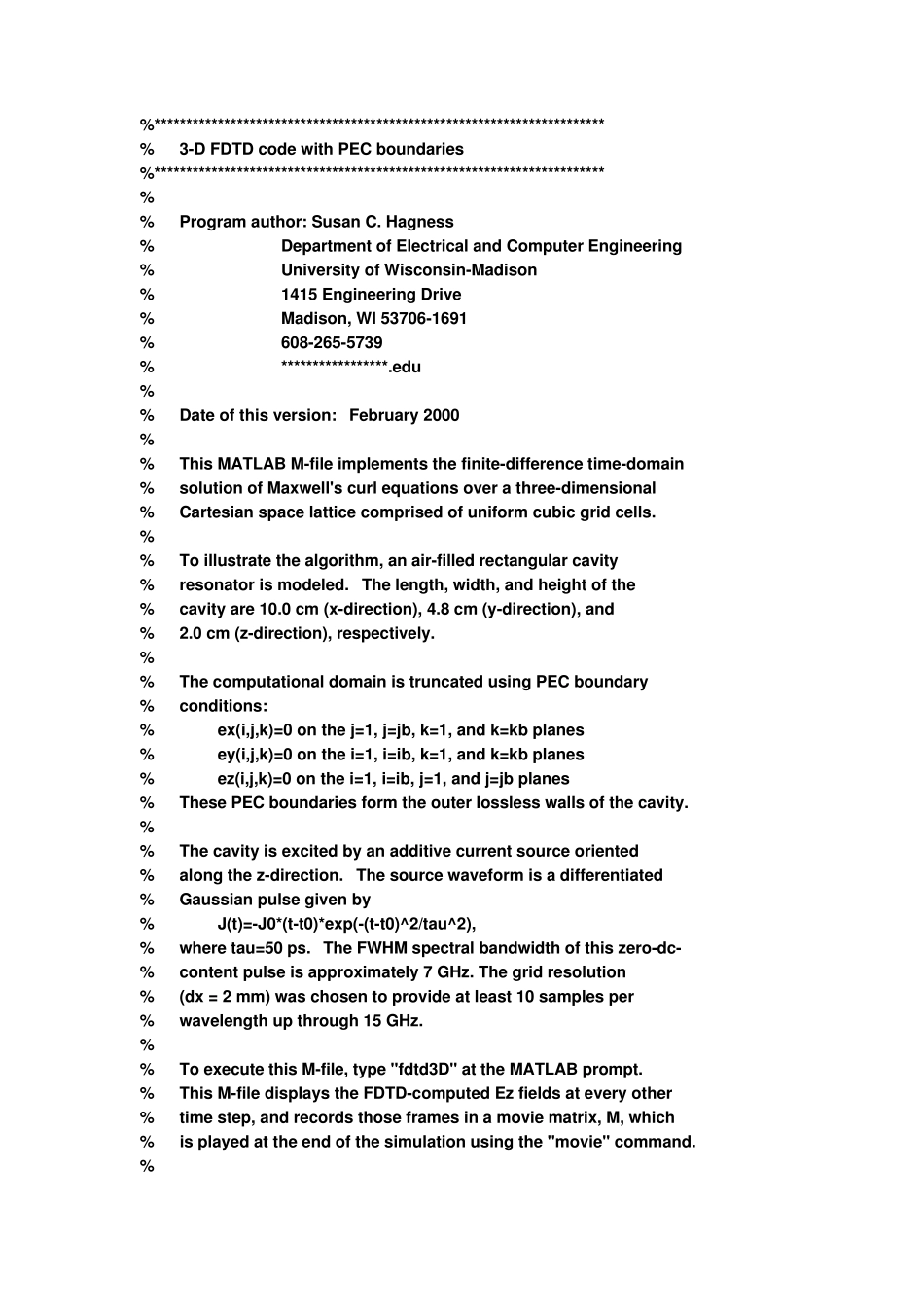%*********************************************************************** % 3-D FDTD code with PEC boundaries %*********************************************************************** % % Program author: Susan C. Hagness % Department of Electrical and Computer Engineering % University of Wisconsin-Madison % 1415 Engineering Drive % Madison, WI 53706-1691 % 608-265-5739 % *****************.edu % % Date of this version: February 2000 % % This MATLAB M-file implements the finite-difference time-domain % solution of Maxwell's curl equations over a three-dimensional % Cartesian space lattice comprised of uniform cubic grid cells. % % To illustrate the algorithm, an air-filled rectangular cavity % resonator is modeled. The length, width, and height of the % cavity are 10.0 cm (x-direction), 4.8 cm (y-direction), and % 2.0 cm (z-direction), respectively. % % The computational domain is truncated using PEC boundary % conditions: % ex(i,j,k)=0 on the j=1, j=jb, k=1, and k=kb planes % ey(i,j,k)=0 on the i=1, i=ib, k=1, and k=kb planes % ez(i,j,k)=0 on the i=1, i=ib, j=1, and j=jb planes % These PEC boundaries form the outer lossless walls of the cavity. % % The cavity is excited by an additive current source oriented % along the z-direction. The source waveform is a differentiated % Gaussian pulse given by % J(t)=-J0*(t-t0)*exp(-(t-t0)^2/tau^2), % where tau=50 ps. The FWHM spectral bandwidth of this zero-dc- % content pulse is approximately 7 GHz. The grid resolution % (dx = 2 mm) was chosen to provide at least 10 samples per % wavelength up through 15 GHz. % % To execute this M-file, type "fdtd3D" at the MATLAB prompt. % This M-file displays the FDTD-computed Ez fields at every other % time step, and records those ...


